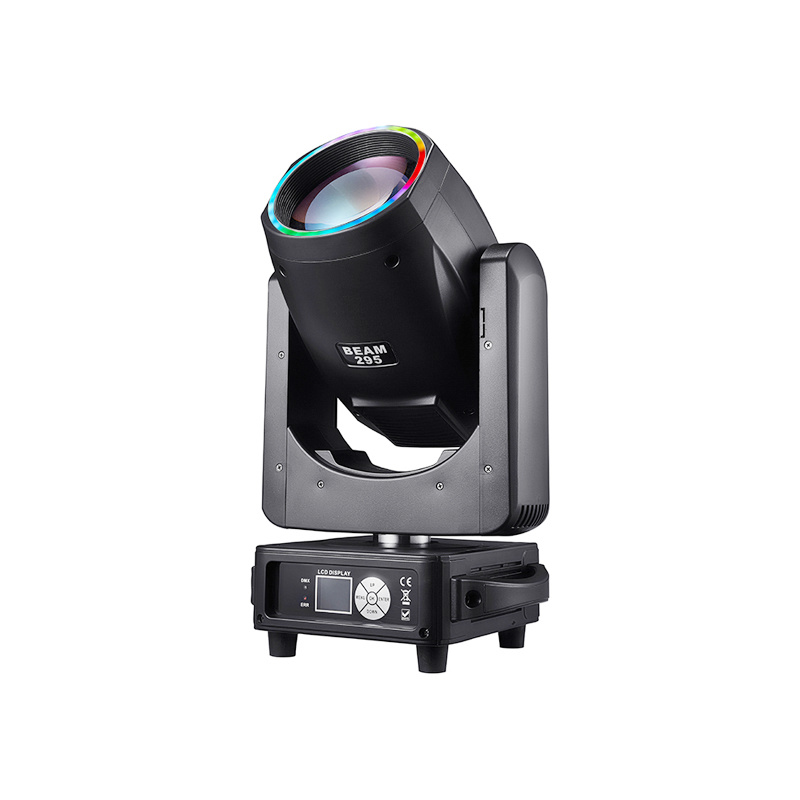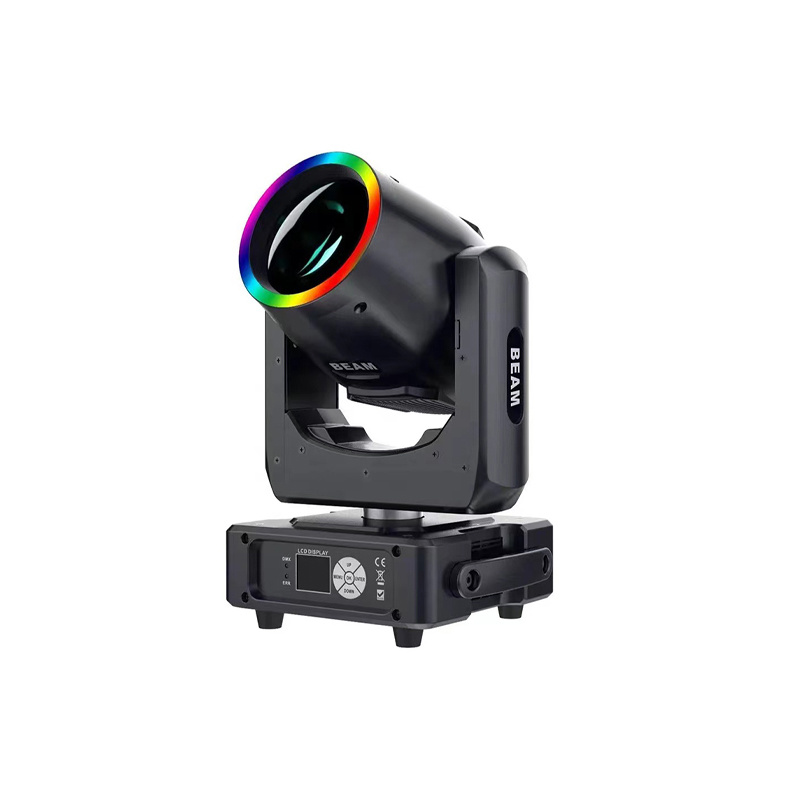Moving Head Beam Light | Professional Stage Lighting Guide
Classification:
summary description]
If you’ve ever watched a live concert or walked into a nightclub where the lights seemed to dance with the music, chances are you’ve seen a moving head beam light in action. These powerful lighting fixtures are everywhere — on big festival stages, in theaters, at weddings, and even in modern church productions.
But for many people looking to upgrade their lighting setup, one question keeps coming up: What exactly is a moving head beam light, and which one should I buy? Let’s break it all down in a way that’s easy to understand — no jargon, no confusion, just real answers.
What Exactly Is a Moving Head Beam Light?
In simple terms, a moving head beam light is a type of intelligent stage light that can move in multiple directions while projecting a concentrated, razor-sharp beam of light. Unlike static fixtures that stay still, these lights can pan, tilt, and shift precisely to follow the rhythm or movement on stage.
Bright LEDs or discharge lamps power them, and most of them use DMX512 control systems — a universal language in the lighting world that allows operators to program colors, motion, and effects with incredible accuracy.
When set up properly, moving head beam lights can turn an ordinary space into something spectacular.
Why They’re a Must-Have for Professionals
Ask any lighting designer, and they’ll tell you: once you start using moving head beams, there’s no going back. Here’s why these lights are so popular across the industry.
1. Unmatched Brightness
These lights create tight, focused beams that stay visible even in smoky, foggy, or brightly lit environments. Perfect for concerts or large outdoor shows where intensity matters.
2. Dynamic Movement
The head of the fixture can rotate horizontally and vertically, giving you the freedom to craft sweeping movements that bring energy and motion to the stage.
3. Built-In Effects
Modern moving head beams come packed with creative tools — gobos, prisms, color wheels, strobes, and even frost filters. With a few clicks, you can transform a single light into an entire light show.
4. Efficiency and Durability
LED models use far less electricity and produce less heat compared to older halogen or discharge lamps. That means lower energy bills and a longer lifespan — a win for professionals and venue owners alike.
Choosing the Right Moving Head Beam Light
Before you hit the “buy” button, take a moment to think about what you really need. Not every beam light fits every scenario. Here’s what to pay attention to:
1. Brightness and Power
For small clubs or indoor stages, a 100–230W beam should do the trick. Bigger venues or outdoor events usually need 300W and above for the beam to travel further and stay visible.
2. Beam Angle
A smaller beam angle (2°–5°) gives you that signature laser-like look. A wider beam (6°–10°) creates softer, broader effects. Your choice depends on the atmosphere you want to create.
3. Control Options
Make sure your light supports DMX512 or Art-Net — these are the most reliable protocols for professional setups. Some lights even include wireless DMX for easier rigging.
4. Build Quality
Sturdy housing and efficient cooling are key. Overheating is a common issue during long performances, so always check the light’s ventilation design.
5. Weather Resistance
Planning outdoor events? Go for IP65-rated beam lights that can handle dust, humidity, and rain.
Real-World Problems and How to Solve Them
Even the best moving head beam lights can face issues if not handled properly. Here are some common user complaints — and what you can do about them.
1. The Beams Don’t Look Strong
That’s probably because there’s no haze or fog in the room. Without particles in the air, beams become invisible. Use a haze machine to make the light paths pop.
2. Jerky or Inconsistent Movement
This usually comes down to a weak DMX signal or interference. Try using higher-quality cables and keep them short to minimize signal loss.
3. Overheating After Long Use
Keep vents clear and clean the fans regularly. Over time, dust buildup can cause the system to run hot.
4. Syncing Lights to Music
Auto sound modes exist, but for professional results, use a DMX controller. It lets you program cues that match your soundtrack perfectly.
How to Make Your Beam Lights Look Amazing
Here are a few simple tricks from lighting designers that can instantly elevate your show:
- Use multiple beam lights moving in opposite directions to create a “crossing” or “tunnel” effect.
- Combine beam, wash, and spot moving heads for layers of depth and color.
- Play with prism rotation to add complexity and movement to your light beams.
- Always add fog or haze to highlight the light’s path — it makes a world of difference.
Best Environments for Moving Head Beam Lights
These lights are incredibly versatile, which is why you’ll find them in all kinds of venues:
- Concerts and music festivals – for dramatic, sweeping light effects.
- Nightclubs and bars – to create motion and rhythm on the dance floor.
- Theaters and performance halls – for precise, creative stage lighting.
- Weddings and events – adding sophistication and color to special moments.
- Outdoor light shows – when paired with waterproof models, they can light up entire skylines.
Why Quality Makes a Difference
You might find cheap options online, but low-end models often fail where it matters — brightness, smoothness, or reliability. A professional-grade moving head beam light from a trusted brand will pay for itself in performance and lifespan.
Xlighting, for example, produces high-output, DMX-controlled fixtures with stable performance and advanced optics. If you’re in the market for lights that you can trust night after night, investing in quality is the smartest move you can make.
Final Thoughts
A moving head beam light isn’t just a tool — it’s a creative instrument. It shapes mood, directs attention, and turns sound into visuals. When used well, it can completely change how people experience an event.
So whether you’re a DJ wanting to impress the crowd, a stage designer building a full production, or a venue owner looking to upgrade your setup, choosing the right beam light will always be worth it.
FAQs About Moving Head Beam Lights
1. Can I use beam lights in small venues?
Absolutely. Many compact models are designed for small clubs or private events and won’t overpower your space.
2. What’s the main difference between beam, spot, and wash lights?
Beam lights create narrow, sharp beams. Spotlights produce focused but wider patterns. Wash lights are softer and used for color blending.
3. How long do LED beam lights last?
Top-quality LEDs can last anywhere between 20,000 to 50,000 hours, depending on usage.
4. Do I need DMX to run these lights?
Not always. Many have built-in auto or sound-activated modes, but for full control, DMX is best.
5. How many beam lights do I need for a stage?
It depends on the space. A small stage might need 4–6 units, while a large concert could use 12 or more for maximum impact.
More Cases



